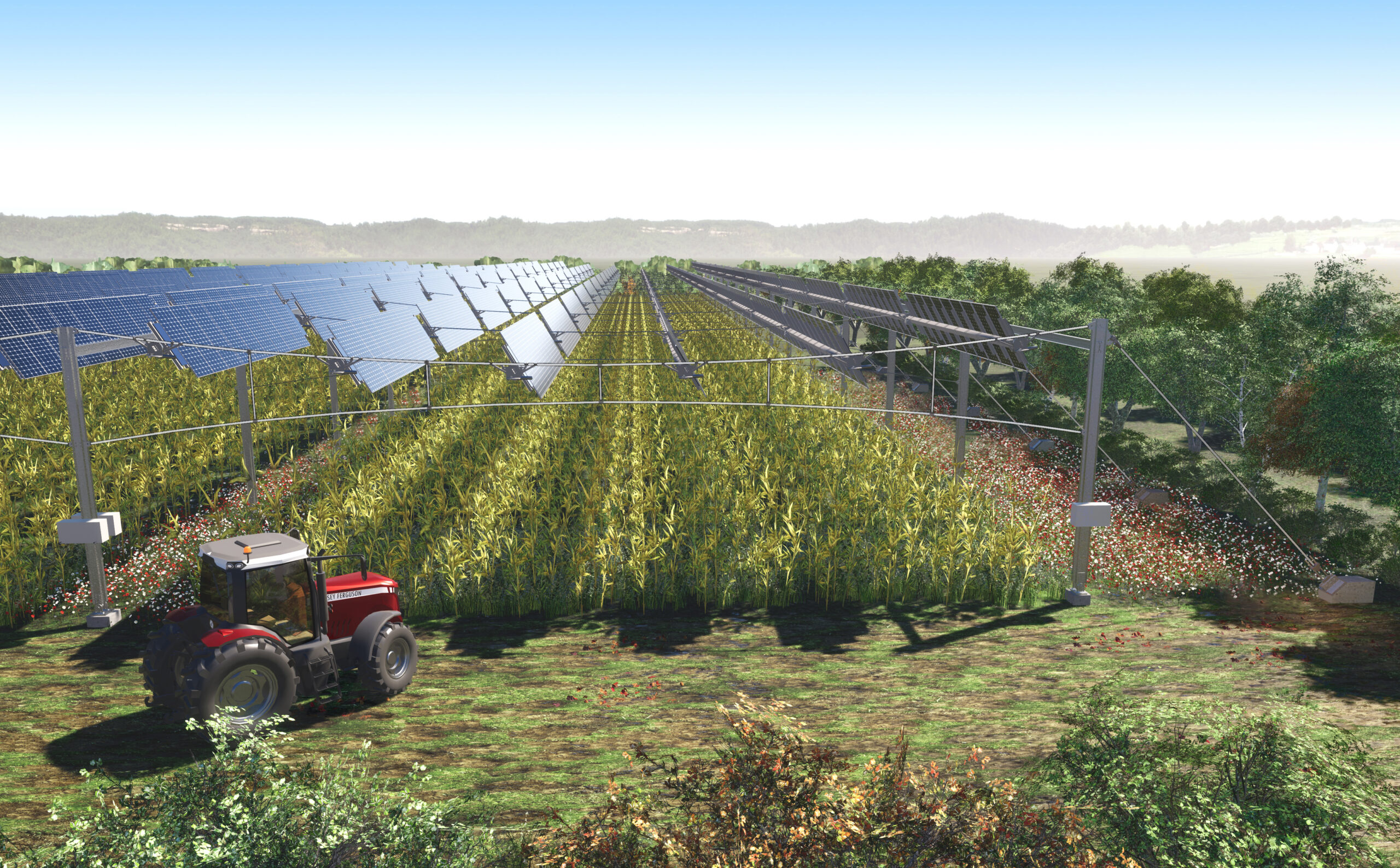TSE, the leading independent solar energy company in France, has announced that it is developing the largest agrivoltaic demonstration programme in the country, with 10 pilot sites of 6ha each spread across France. TSE’s agrivoltaic shading system, designed primarily for field crops, is compatible with all types of agricultural activities. The system, known as an “agricultural canopy”, was designed for all farmers interested in innovation and sustainable agriculture who want to fight against climate hazards.
“To meet France’s new solar energy targets, set at between 35 to 44 GM by 2028 according to the latest RTE [Electricity Transmission Network] report, brownfield land will not be enough. Our agrivoltaic shading system contributes to meeting France’s two major challenges: energy sovereignty and food sovereignty. We are pleased to announce the creation of the largest agrivoltaic demonstrator project in France, with the objective of reaching 1 GW by 2025. Our first pilot site on field crops will be unveiled in September in the [département of] Haute-Saône”, announced Mathieu Debonnet, President of TSE.
The agricultural canopy, based on an innovative technological model, is compatible with field crops and livestock
The agricultural canopy is a shading system equipped with rotating solar panels installed at a height of 5m above farmland. The system’s completely innovative technology using cables has a 0.5% footprint, with 27m between two posts. The system is thus compatible with the use of most agricultural machinery (combine harvesters, sprayers, etc.) and allows all field crop (wheat, maize, etc.) or livestock (cattle, sheep) farming activities to be maintained.
The system is equipped with trackers that tilt the panels along the sun’s axis from east to west, generating partial, rotating shade on the plot over the course of the day. With 400 solar and agronomic sensors spread over the shading system, the panels are tilted automatically and can be adapted to certain weather conditions (wind, hail, frost, rain, etc.)
The system is reversible, and farmers can change the type of crop and/or livestock they farm under it, especially in the event of the takeover or transfer of a farm.
The technologically innovative system was fully designed and developed by the R&D department in Bourgoin Jallieu by a team of engineers highly qualified in the domains of structure (mechanics, vibration, aerodynamics, etc.), data, agronomy and landscape integration.
The agricultural canopy, a tool to advance sustainable agriculture
The partial, rotating shade provided by the system helps protect farmland from climate hazards by reducing heat and water stress:
- Heat stress: Lower temperatures under the shading system in the summer, lower temperature ranges and lower risk of spring frosts
- Water stress: Lower evapotranspiration
The agricultural canopy also improves animal welfare by sheltering livestock in the event of adverse weather and providing shade during periods of extreme heat.
The system is designed to be integrated into the landscape, with local species and multilayered hedgerows which also foster biodiversity restoration.
The partial, rotating shade also helps control sunlight exposure on crops, with up to 30% savings in water. An irrigation system can be built into the canopy to help manage water use and simplify irrigation on the land.
Agronomic trials will be conducted over a period of 9 years on each pilot site.
A collaborative, win-win solution for medium-sized projects
The agrivoltaic shading solution relies on a 40-year long-term (emphyteutic) lease, which provides for rent to be shared between the farm owner and operator.
This rental income secures and diversifies farmers’ income, allowing them to try out new experiments while assuring their financial viability, to invest to improve their farm or to help establish a new generation of farmers focused on innovation and the future of farming.
TSE selected pilot farms according to their innovative capacity, their farming/livestock practices and their surface area of medium-sized plots in order to cover more projects and regions and to bring solar energy production to the centre of regions.
Back